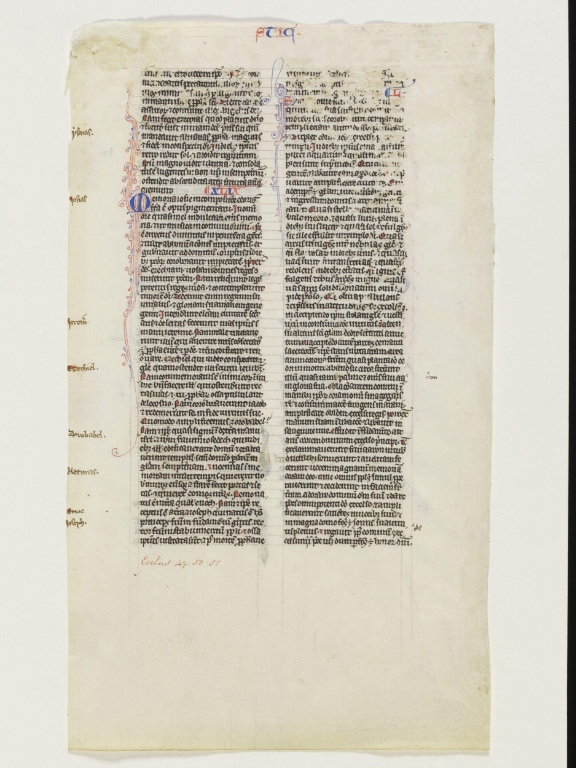Manuscript Cutting: Leaf from a Latin Bible

Unknown Artist
Leaf from a Latin Bible
Paris, about 1240-75
Ink and pigments on parchment, 267 x 155 mm
Victoria and Albert Museum (No. CIRC.381-1924)
This leaf from a Parisian thirteenth-century bible shows the physical alterations and wear to the manuscript over time. There are annotations in the margins from medieval times, and a note below the text from the twentieth century. The early annotations indicate how such texts were used and amended physically to help their owners connect with their contents by inserting their own interpretations. The sustained use and alterations of these manuscripts through the centuries show their purpose as physical objects of devotion.
This leaf shows the Vulgate text written by an unknown scribe. Vulgate is the Latin translation of the Holy Bible by Saint Jerome, who was commissioned by Pope Damasus I to revise the Vetus Latina Gospels, also known as ‘Old Latin’ translations of the bible. Versions of the Bible from which this cutting came from first appeared in Paris in the 1220s and contained the entire bible in one volume, making the bible portable. Annotations in the margins of this leaf date from the Middle Ages to the twentieth century. Enduring physical engagement with these religious texts evidence the devotional connection to worship that they provided throughout centuries, often showing the deeply personal connections between a manuscript’s owner and specific passages of text. The wear to the text in the top right corner of this cutting shows how frequently this passage was visited and studied, evidencing a repetitive devotion to the religious material. The decorated initials of the passage, and flourishes around them, are examples of how the decorative elements of illustrated manuscripts appear even in full pages of text.